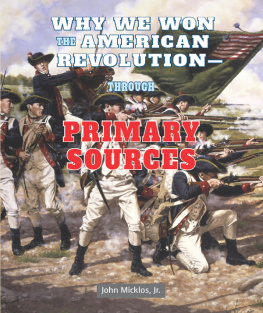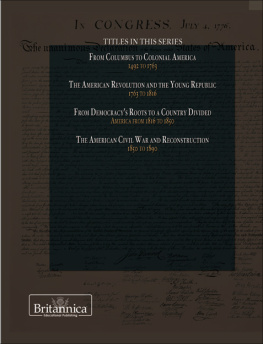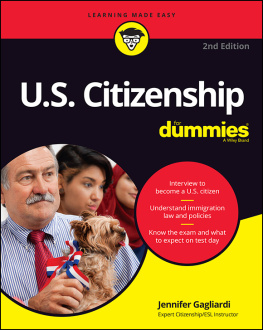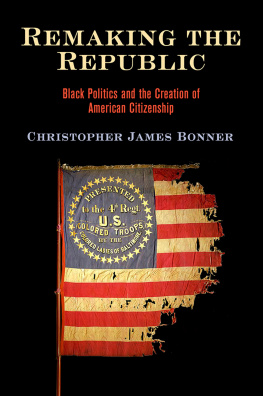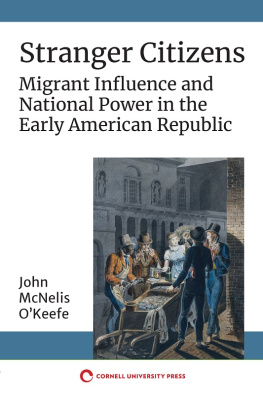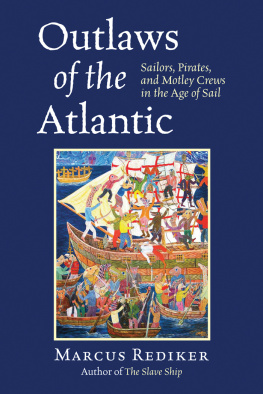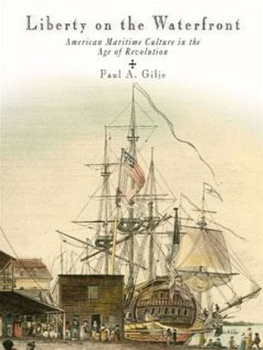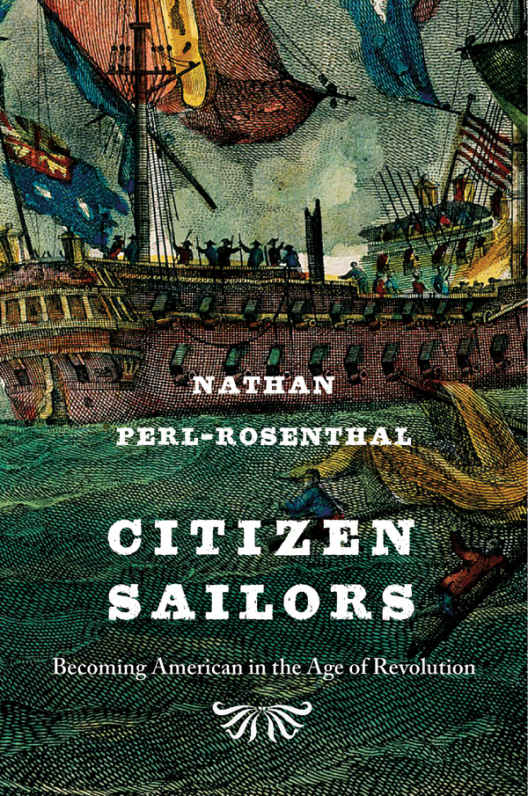
CITIZEN SAILORS
Becoming American in the Age of Revolution
Nathan Perl-Rosenthal
THE BELKNAP PRESS OF HARVARD UNIVERSITY PRESS
Cambridge, Massachusetts, and London, England
2015
Copyright 2015 by Nathan Perl-Rosenthal
ALL RIGHTS RESERVED
Jacket art: Battle of Flamborough Head, 23 September 1779 between Captain Pearson, commanding the Serapis, and John Paul Jones, commanding the Bonhomme Richard or Good Man Richard (during American War of Independence 1774-83), engraving/Art Resource
Jacket design: Graciela Galup
978-0-674-28615-3 (cloth : alkaline paper)
978-0-674-91555-8 (EPUB)
978-0-674-91554-1 (MOBI)
978-0-674-08917-4 (PDF)
The Library of Congress has cataloged the printed edition as follows:
Perl-Rosenthal, Nathan, 1982
Citizen sailors : becoming American in the age of revolution / Nathan Perl-Rosenthal.
pages cm
Includes bibliographical references and index.
1. SailorsUnited StatesHistory18th century.
2. SailorsUnited StatesHistory19th century.
3. SailorsCivil rightsUnited StatesHistory.
4. CitizenshipUnited StatesHistory.
5. United StatesHistory, Naval18th century.
6. United StatesHistory, Naval19th century, I. Title.
E182.P435 2015
359.0092dc23 2015023421
For Jessica
CONTENTS
MAPS
It was a fall day in 1782, coming up on the last year of the American revolutionary war, when three young men in an open boat neared the dock in Dover, England. As they approached, shrill cries of Welcome, welcome Captain Dyon went up from the crowd gathered on the waterfront. The captain and his two fellow prisoners, escorted by a strong guard, eyed with trepidation the crowd of women surging on shore. The captain had not expected to be recognized in this port, least of all by that name; their greetings had a sinister ring. As they came closer, rocks began to fly. Dyon counted himself fortunate to be wearing a hard glazed hat that he could pull down about his face to get some protection from the missiles. His shipmates shielded themselves as best they could. As they stepped ashore, a storm of invective enveloped them. Decades later, Dyon still remembered the threats and insults hurled at him, such as he had never before heard proceed from the mouth of any human being. It had taken a force of nearly a hundred soldiers, he reckoned, to disperse the crowd and conduct the three of them away from the waterfront to the nearby fort.
The short walk from the dock afforded the man time to rehearse which story he would tell his captors. In one version, Captain Dyon
He probably also thought about presenting himself to his captors in a different light. His French was fluent by this time, honed by years spent in Europe and many hours of conversation with Frenchmen aboard ship and in English prisons. The vessel that he commanded had sailed from French soil, the northern port of Dunkirk, and it flew the white fleur de lys pennant of the House of Bourbon, kings of France. More to the point, Fanning himself had been naturalized as a French subject in 1781a prerequisite for com
I still remember the mounting excitement I felt when I first turned the pages of Fannings memoirs more than a decade ago. The conventional history of the Revolution that I had learned before college, like most Americans, was a tale of a new nation coming into being. It is a story that revolves around the drama of colonists standing up for their rights and fighting to throw off the yoke of a distant empire. The storys protagonists are national heroes, the likes of John Adams and George Washington, and the setting the iconic landscapes of the Eastern seaboard. Familiar as I was with this narrative, reading Fannings tale induced a pleasing state of disorientation. A New Englander by birth, the captain spoke French as well as English. He considered himself an American patriot though he had become a subject of the king of France. (Still unabashed about this years later, he explained that he considered that it made but a little difference whether I fought under the French or American flag, as long as I fought against the English.) And his revolutionary war took place on the ocean and in the British Isles, far from the familiar soil of North America. He seemed at first glance to be a perfect cosmopolitan revolutionary, tied not to a narrow national movement but to a wider revolutionary wave just starting to crest. His story, his very existence even, called into question the boundaries of the Revolution: what did it mean to call it American, after all, if many of its protagonists were in fact French subjects fighting their own war an ocean away?
Fannings tale helped launch me into a hunt for more leavings of his lost world. I went to France and then England for what turned out to be the first of many visits. In the archives there, I picked up the trails of sailors who had led lives not unlike Fannings. I read the 1782 deposition of a Marblehead boy, set down in the crisp hand of a British admiralty clerk, recounting the extraordinary vicissitudes of fortune that had taken him from Nantes to Malta and back again in the space of a year. Sitting in the Archives Nationales in Paris, I was transported to the docks of Le Havre in 1798 as John Smith, twenty-six-year-old captain of an American vessel, tried gamely to deflect a French police officers suspicions that he was an Englishman in disguise. I read scholarship in maritime history, both old and new, that framed and sought to explain this remarkable world. These tales took me on further archival journeys to a widening circle of places that had played a part in the American Revolution. I read the furious protests that American captains made to the authorities in the Dutch Caribbean when they were brought into port for carrying improper paperwork, recorded in a ponderous volume riddled with worm holes. I paged through some of the thousands of dossiers that clerks had painstakingly assembled in far-flung ports, from Copenhagen to Guadeloupe to Mauritius, to prove that American seamen detained in their harbors were not who they claimed to be.
As I delved deeper into the world that early American seafarers inhabited, I came to see merchant seamen not as outriders to the nation but as one of the small but crucial number of transnational groups who helped to form the early United States during the age Merchant seamens uniquely transient labor put them at the center of another crucial struggle in the early republic: defining the borders of American citizenship. Wherever sailors wheeled their ships around the great Atlantic gyre and beyond, a struggle over belonging went with them. In familiar waters and far-off ports, sailors encountered questions about who they were and to what state they belonged. Naval officers, government officials, and many others pressed them to reveal their true identities or face dire consequences. After a time, merchant sailors themselves began asking the same kinds of questions of one another. As I observed more and more such moments of reckoning spread over long miles of ocean and dozens of years, a new picture began to draw itself before my eyes. American merchant seamen not only became attached to the state earlier and more strongly than almost anyone else: they had a unique role in the long process of drawing a sharp line between American citizens and the rest of the world.
The particular moment of reckoning for Fanning and his men came quickly on that fall day in 1782. When the three arrived at the fort, their British captors took the two crewmen away to be interrogated first. The men had told their captain that they were Americans when they enlisted in the French port of Dunkirk, but the pair of British officers who questioned them concluded that the men
Next page

